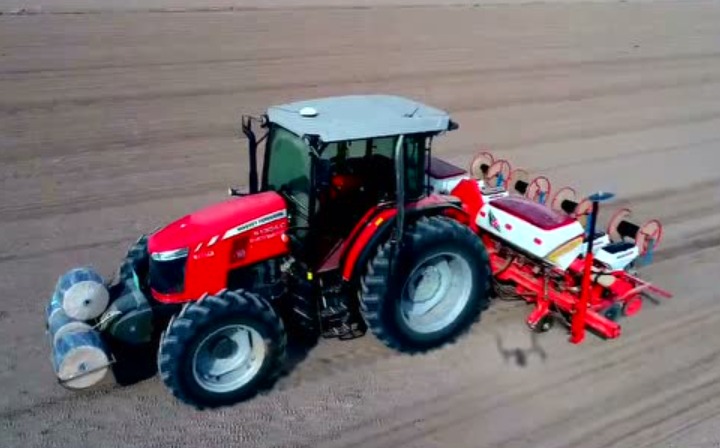


With the development of agriculture and the innovation of science and technology, unmanned, less-manned, digitalized and intelligent agriculture will become the main development trends in the future. Among them, drones are widely used in agricultural production. Compared with traditional agriculture, unmanned machinery can be remotely controlled by workers, which can increase the investment in human resources and reduce the labor demand of agricultural production. For example, in fertilization operations, unmanned agricultural machinery is used for efficient fertilization. Compared with manual fertilization, unmanned agricultural machinery needs to comprehensively sprinkle fertilizer on the farmland to be fertilized when fertilizing, but it does not have human judgment ability, so a control method is needed to help it fertilize efficiently. The device for real-time online monitoring of farming and fertilization operations replaces manual detection of fertilizer levels in fertilizer boxes, reduces the occurrence of insufficient fertilizer and missed fertilizer due to fertilizer emptying, and avoids unnecessary losses such as crop yield reduction and damage to agricultural machinery and equipment. The unmanned agricultural machinery fertilization control method uses a visual system to drive the fertilization agricultural machinery to locate and determine the boundaries of the farmland, and uses the overlap of the four fertilization areas of the fertilization agricultural machinery with the farmland area to spread the fertilizer from the fertilizer nozzle in the fixed fertilization area, so that the fertilizer can be spread in the farmland area comprehensively, and fertilizer will not be spread in areas outside the farmland. It is efficient, convenient and practical. The laser ranging sensor can determine the material level by measuring the distance between the laser and the target object. This technology has the advantages of high precision, fast response and good stability, so it has been widely used in the industrial and agricultural fields.
The basic principle of laser ranging sensor to measure material level is: project the laser beam into the silo or tank. When the laser beam contacts the surface of the material, part of the light will be reflected back and received by the sensor. According to the time difference between laser emission and reception and the speed of light, the distance between the laser beam and the target object can be calculated to obtain the material level. The L2 series phase laser ranging sensor in the laser ranging sensor of Motian RF has a 485 serial port communication interface and a standard Modbus RTU protocol. It uses a 650nm visible red single-point laser and is suitable for PLC/industrial computer/computer/single-chip microcomputer, etc. The maximum range can reach 80 meters, the accuracy can reach ±1mm under ideal conditions, and the measurement rate can reach 20hz. This product has a wide range of applications and can be used for auxiliary measurement, material/level/liquid level setting, auxiliary positioning, various industrial automation equipment, robotic arms, driving/track positioning, drone positioning and other fields.